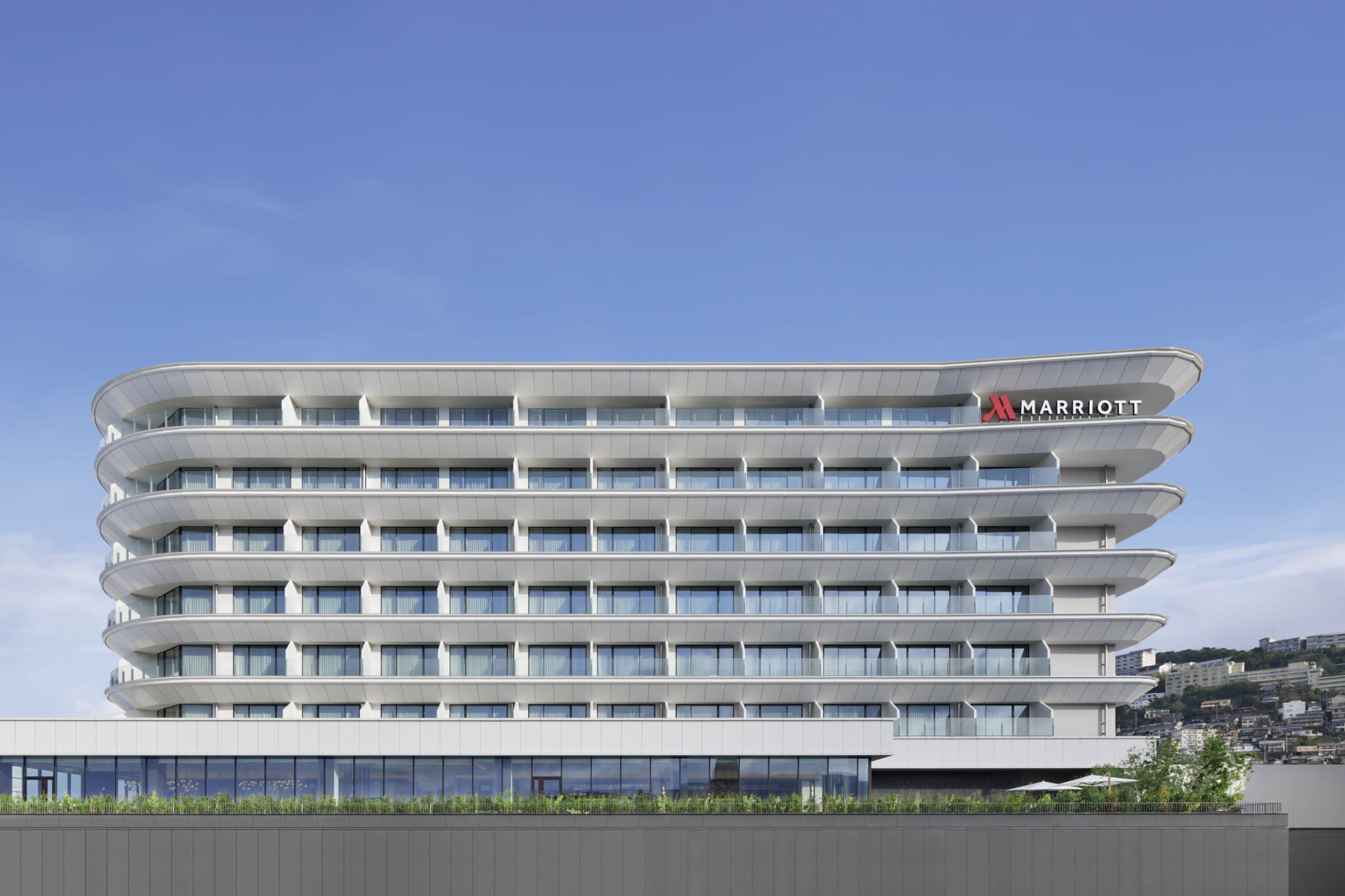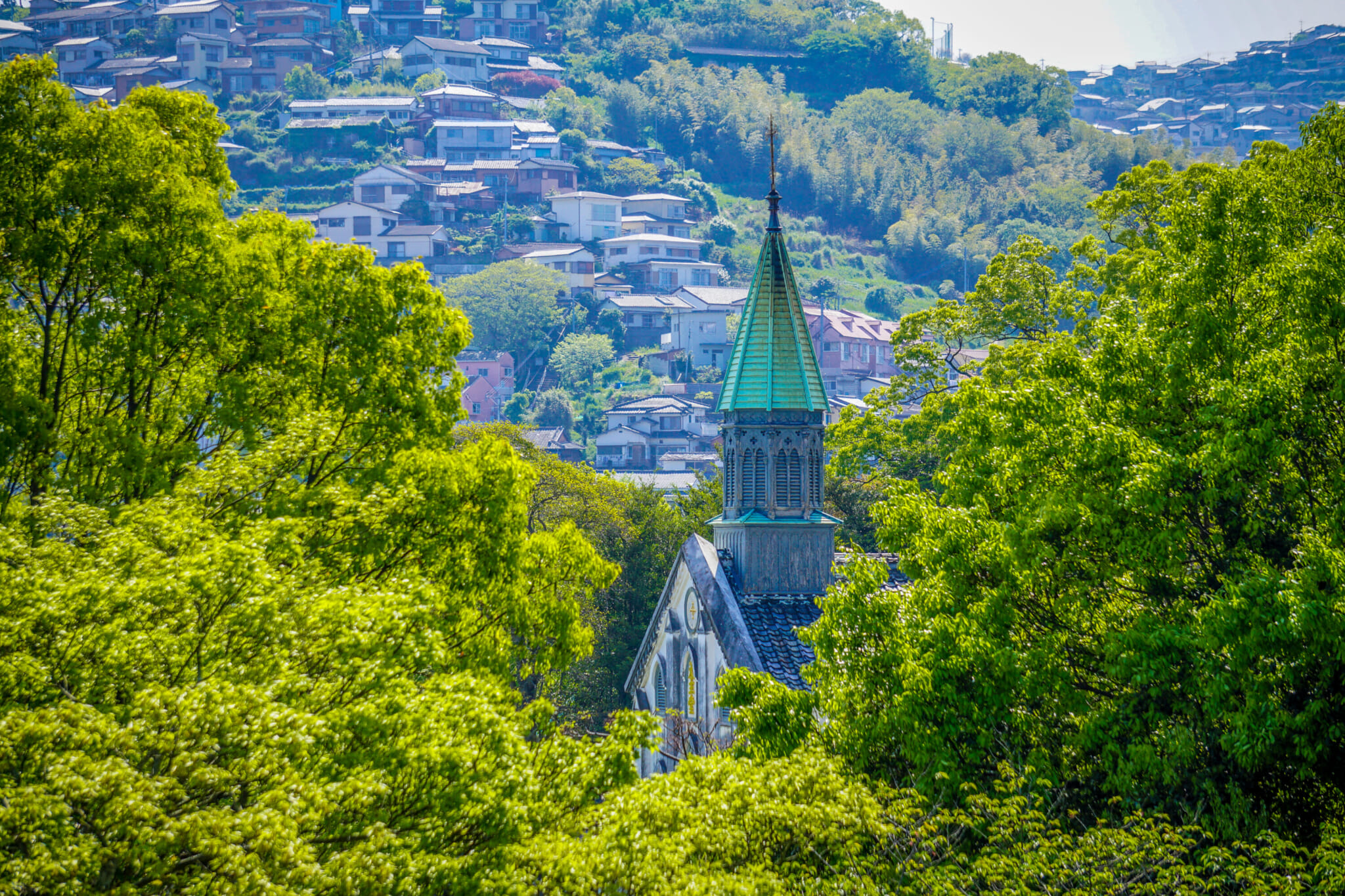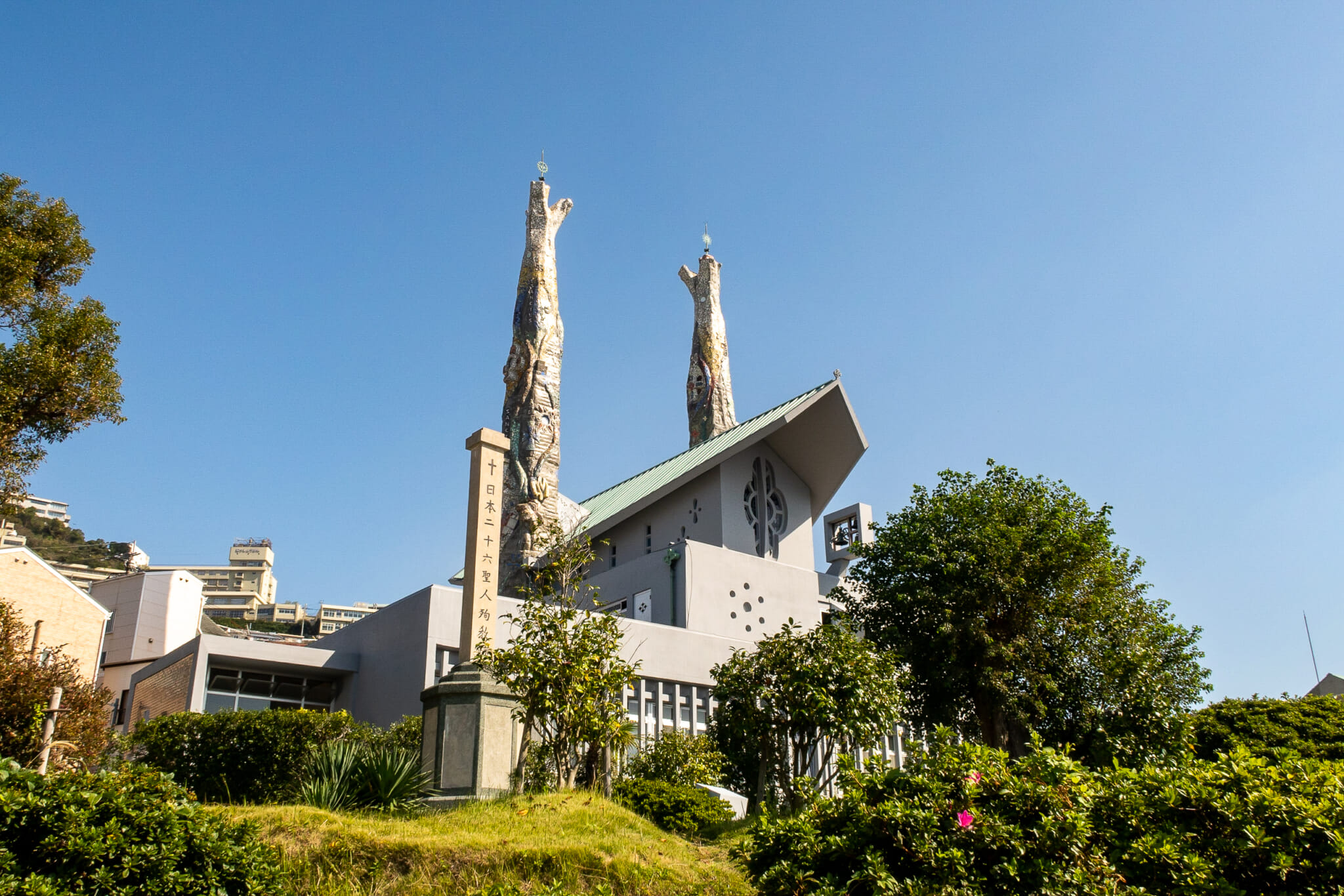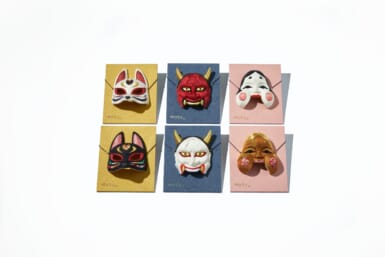Nagasaki is a place with a rich and complex culture, extending back centuries. Though it’s often associated with the devastation of the atomic bomb, its history holds many fascinating, lesser-known tales. As Japan’s early gateway to the West, it has long been an epicenter of cultural exchange, with Portuguese, Dutch and Chinese influences creating a distinctive local identity unlike anything else in Japan.
Embark on a journey through time to uncover historic monuments, sacred sites and unique regional cuisine. Start your exploration with these six significant Nagasaki locations.
The Twenty-Six Martyrs Museum
Start your foray into the complexities of Christianity in Japan at The Twenty-Six Martyrs Museum and Monument. Located just a few minutes from JR Nagasaki Station on Nishizaka Hill, this facility marks the spot where 26 Christians were executed in 1597 by the order of samurai and feudal lord Toyotomi Hideyoshi. Six missionaries from Spain, Mexico and Portugal, together with 18 Japanese Christians, were forced to march 800 kilometers from Kyoto and Osaka to Nagasaki. Two Catholics were added to the group partway into the month-long trek, which culminated in their crucifixion. The museum retells the rise, prohibition and revival of Christianity in Nagasaki through a wealth of authentic documents, relics and unique Buddhist Kannon-shaped Virgin Mary statues.

Bastian’s Residence Site
When Christianity was outlawed nationwide in 1614, many worshippers fled to the northwestern Sotome area, where clan rulers were more lenient in enforcing the ban. There, they could practice in secret. This is also where a Japanese missionary named Bastian is said to have compiled a liturgical Christian calendar and shared prophecies with fellow believers. He traveled through the region’s deepest woods and sought refuge in small huts to evade pursuers. This site, which is about an hour’s drive from central Nagasaki city, is said to be one of his many hiding spots.

Karematsu Shrine and Prayer Rock
Another deeply important site for Christians in Sotome, Karematsu Shrine marks the place where Spanish Franciscan missionary San Juan, or Jiwan as he is known here, is enshrined. Jiwan was Bastian’s mentor and religious leader, and Karematsu Shrine is one of only three shrines in the country to enshrine a Christian priest. Visitors to the site can pray at the prayer rock, which is tucked away to avoid detection, to gain an understanding of what it was like for the Hidden Christians to worship in secret. Despite its secluded location, it only takes 10 minutes by car from the Shitsu area to this sacred site.
Endo Shusaku Literary Museum and Contemplative Space Enchanté
Learn about one of Japan’s most notable literary masters and author of the novel Silence, Shusaku Endo, at this enormous space overlooking the sea. The museum, an approximately 10-minute journey by car from Karemastsu Shrine, houses about 30,000 items related to the author, including original manuscripts and more. The museum also has an attached contemplation space, Enchanté, for meditation and private thought. Visitors should stay in the area after hours as the view of the sun setting into the Goto-nada Sea is — providing the weather conditions are favorable — spectacular.

Shitsu Norakusha
Less than a 10-minute car ride from Bastian’s residence site, Shitsu Norakusha in Sotome’s Shitsu area is a fantastic place to get in touch with the region’s culinary history. The steep slopes in the area were purportedly not suitable for rice farming, so the main crop was sweet potatoes. As a result, the region’s delightful traditional sundried sweet potato rice cakes (kankoro mochi) are said to originate here. In the autumn, guests can participate in sweet potato harvesting in the picturesque terraced fields; year-round, they can participate in kankoro mochi making experiences.

Setre Glover’s House Nagasaki
This charming hotel in central Nagasaki’s hilly Minami-yamate district is decorated with European antiques, indicative of the area’s historic ties to the West. It is only a short walk from its namesake and one of Nagasaki’s biggest draws, Glover Garden, where Scottish merchant Thomas Glover’s former residence lies. Guests at Setre Glover’s House Nagasaki can sample an extensive selection of elevated local cuisine.

Another Hotel Option: The Nagasaki Marriott Hotel
Opened as part of the JR Nagasaki Station complex redevelopment, Nagasaki Marriott Hotel offers ultimate convenience combined with stunning views of Nagasaki Harbor and beyond. For more information, visit their website.
To plan your trip to Nagasaki, visit the official website of sustainable Nagasaki or the the website for Discover Nagasaki.
This article appeared in Kyushu Weekender 2024. To read the whole issue, click here.














